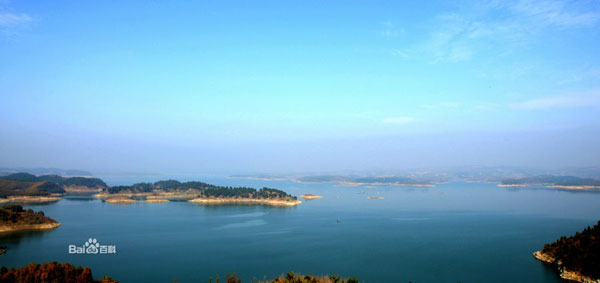China water diversion faces pollution control challenge
 0 Comment(s)
0 Comment(s) Print
Print E-mail Xinhua, July 27, 2013
E-mail Xinhua, July 27, 2013
A year away from the start of a major scheme to divert water from the water-abundant south of China to the arid north, a central Chinese city that is home to a major water source still faces huge challenges in pollution control.
|
|
| Danjiangkou reservoir [File photo] |
A 370-square-km area in Danjiangkou in the city of Shiyan, Hubei Province, is scheduled to be inundated as of August to store water from the Hanjiang River, a major tributary of the Yangtze River, the country's largest.
The Danjiangkou reservoir, the water source of China's mega south-to-north water diversion project, is expected to supply water through canals and pipelines to the parched northern regions, including Beijing and Tianjin, starting mid 2014.
The inland poverty-stricken city, however, faces fund shortages in fighting pollution in five rivers that flow into the Danjiangkou reservoir as half of local sewage water is discharged untreated.
The water quality in one of the five rivers is labeled "grade IV," which means "industrial use only," and that in the other four is the worse "grade V," meaning "agricultural use only."
The water in all the five rivers needs to meet "grade III" by 2015, according to a water pollution control plan issued by the State Council, or China's cabinet.
"The target is very unlikely to be met as many pollution control projects lag behind schedule due to a fund shortage," said Cheng Jiagang, vice mayor of Shiyan.
The local government faces a fund gap of 3 billion yuan (US$486 million) in building sewage pipes and ecological restoration facilities, and expanding sewage treatment capacity to clean up the rivers and meet the target, the official explained.
Due to the lack of a proper sewage system, there are 1.3 million tonnes of waste water directly discharged into the five rivers per day, Cheng said, adding that the city needs to build another 1,106 km of sewage pipelines to collect all waste water.
Zuo Hui, a senior engineer with the Shiyan environmental protection bureau, said domestic waste water from many residential neighborhoods was discharged into rivers untreated.
Meanwhile, the overuse of fertilizers in agriculture was also a factor behind the pollution, Zuo said.
The problem, if unsolved in the coming year, could pose a threat to the quality of water in the Danjiangkou reservoir, the engineer warned.
"The task is arduous and urgent," said Zhou Ji, the Communist Party chief of Shiyan. "We hope the general public, particularly the beneficiaries in the northern areas, will take note of our challenges."
In a bid to ensure clean water, Shiyan has shut down 329 factories in recent years, which resulted in a decline in fiscal revenues by 800 million yuan per year.
Meanwhile, it has increased annual spending on environmental protection to 1.5 billion yuan. But the relatively under-developed city finds it impossible to bear all the cost.
"A compensation mechanism should be established so that the northern regions can help to fund the environmental protection and to improve the the livelihood of 180,000 relocated villagers," said Zhou.
The south-to-north water diversion project, first envisioned by China's late chairman Mao Zedong, was designed to consist of eastern, central and western routes, with an estimated overall cost of 500 billion yuan (US$81.0 billion) and a construction period of 40 to 50 years.
The project aims to transfer 44.8 billion cubic meters of water annually from the country's water-rich south, mainly the Yangtze River reaches, to quench the water shortage in the north.
Construction of the eastern and central routes began in December 2002 and December 2003 respectively, and water diverted via the central route will mainly supply the Chinese capital, Beijing.







Go to Forum >>0 Comment(s)